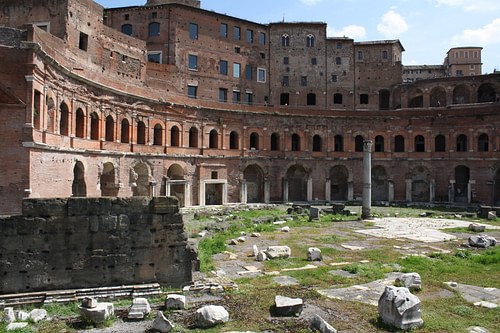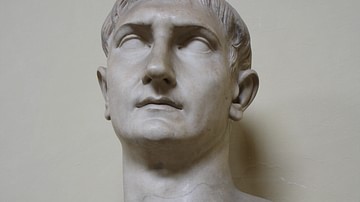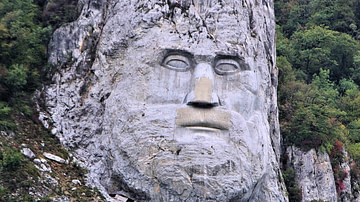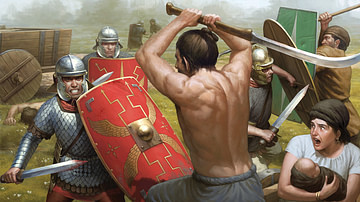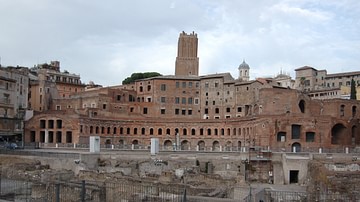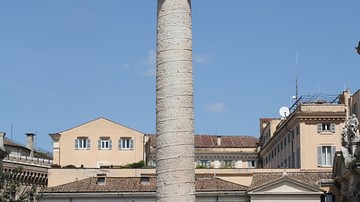Trajan's Market is the name given in the early 20th century CE to a complex of buildings in the imperial fora of Rome constructed in 107-110 CE during the reign of Trajan. The complex included a covered market, small shop fronts and a residential apartment block.
The complex was built at one end of Trajan's Forum and includes buildings that had a number of different functions, predominantly commercial. Constructed on three different levels into the terraced hillside behind, access to the various parts was provided via connecting staircases. The ground level shallow alcoves opened onto a street and were used for small shops whilst there were more shops in the arcades above. The ground level alcoves are of uneven depth due to the fact that they were constructed following the bedrock of the hill. Originally, they would have all been framed with travertine, extending their capacity for displaying goods. One alcove (5th from the left) has been restored to illustrate the original look and also has the typical window above the lintel.
On the upper level, access staircases were built at each end of via Biberatica running above the semi-circular façade. The large uppermost central building was used as an apartment block, and the large structure further left functioned as a covered shopping arcade. In front of the whole complex, separated by a tufa wall but accessible through a large central gateway, was the Exhedra and Porticus of Trajan's Forum.
The buildings are largely constructed using concrete and faced with brick, and it is one of the finest examples of Imperial Roman architecture using these materials. The decorative semi-circular façade includes brick pilasters with travertine bases and capitals framing each archway on the second level. Decorative brick-work gives an added elegance, including entablatures of carved brick and alternate triangular and semi-circular pediments. White stucco would have once covered much of this brickwork and the pilasters, entablature, and pediments display evidence of having once been painted red.
The name of the street on the upper level of the Market was via Biberatica, perhaps from the Latin biber - meaning drink - and hinting at the various drinking establishments which served the market shoppers. The principal products sold at the market would have come from across the empire and included fruit, vegetables, fish, wine, oil, and spices such as pepper.
The whole complex became part of a medieval fortress in the 12th and 13th centuries CE with the notable addition of the huge tower, the Torre delle Milizie. First properly excavated in the 1920s and 1930s CE, the site quickly acquired the name Trajan's Market and it not only stands as one of the most imposing ruins of Imperial Rome but is also the current home of the Museum of the Imperial Forums.
